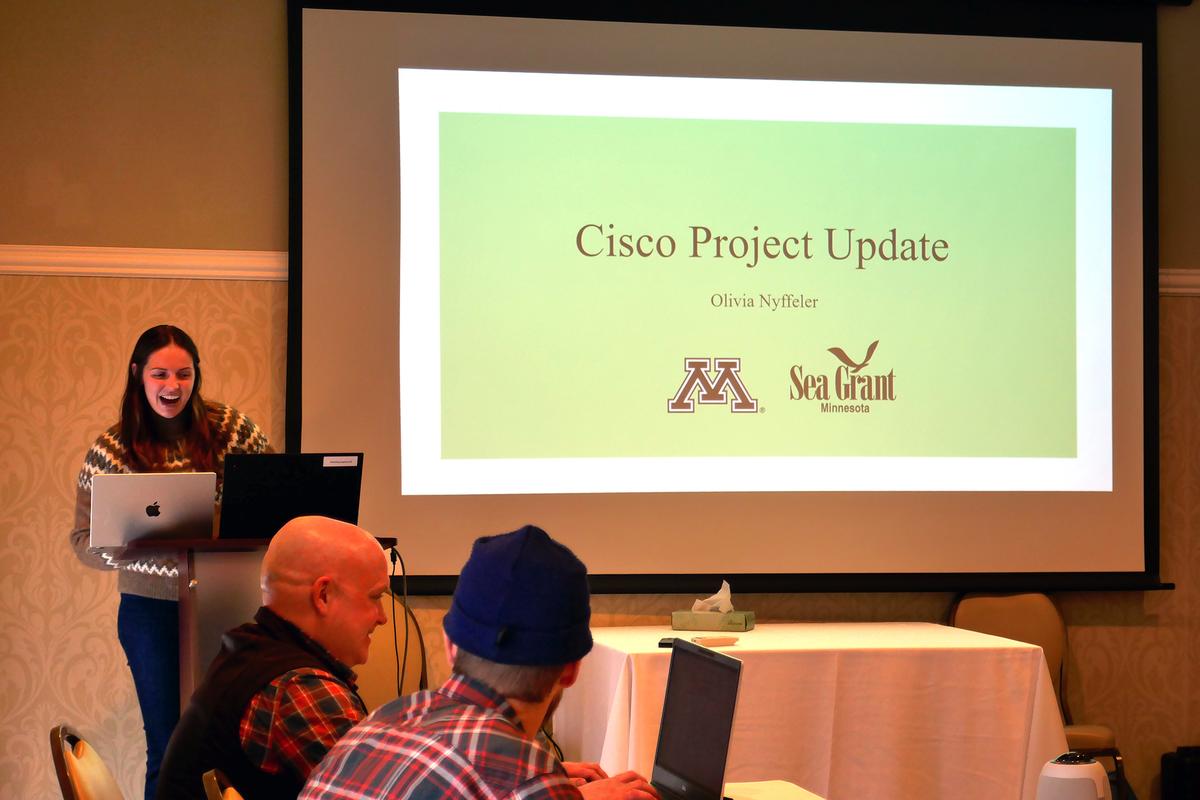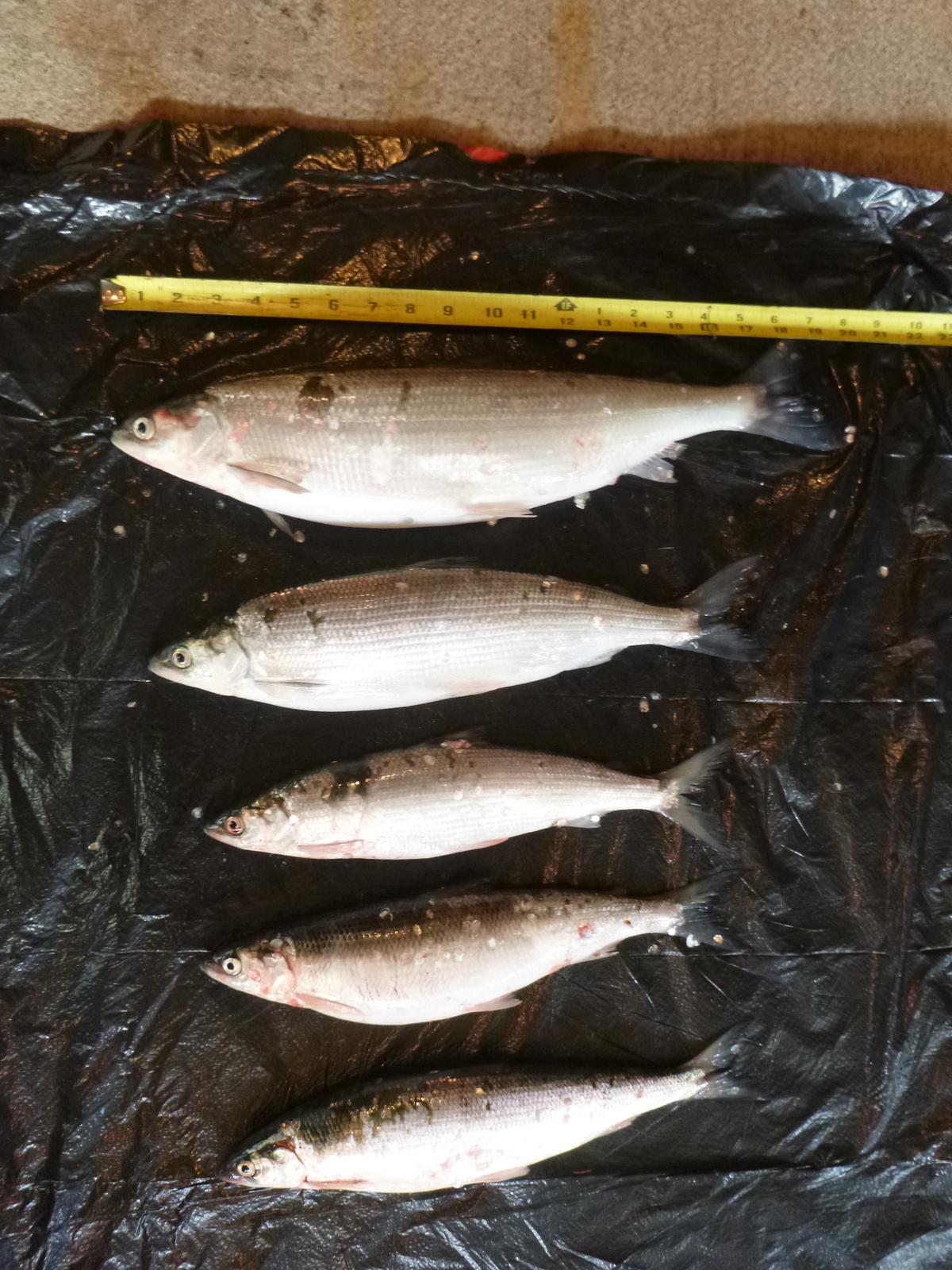
For the first time in 20 years it appears Lake Superior Cisco, called Lake Herring by commercial fishers and Lake Superior locals, had a potentially record-breaking number of fish hatched and that survived during their 2022 annual spawning period, called a year class.
A large year class for Cisco is important because they are a native prey fish species in Lake Superior that supports both the top predators such as Lake Trout and an active commercial fishery.
The strong 2022 year class was confirmed by the high catch of one-year-old fish captured in the 2023 bottom trawl survey by the U.S. Geological Survey. The USGS Lake Superior Biological Station (USGS LSBS) in Ashland, Wisconsin, has conducted the survey since 1978.
Although a boom-and-bust cycle for the Cisco population is not unusual, the lack of a strong year class for the past 20 years indicated Cisco populations were declining - a concern to both fishery biologists and commercial fishers.
This news about Cisco (Coregonus artedi) was a hot topic at a January 2024 Lake Superior Technical Committee fisheries meeting in Ashland, Wisconsin. A number of presentations at the meeting explored potential causes for Cisco’s boom-and-bust cycles. The Lake Superior Committee is composed of fisheries biologists and managers from states, tribes and the province of Ontario under the auspices of the Great Lakes Fishery Commission. The group meets twice a year to share information and discuss the fisheries resource in Lake Superior and how best to manage the fish community for long-term sustainability.
Graduate Student Research
An interesting update at the Lake Superior Technical Committee meeting was presented by Olivia Nyffeler, a University of Minnesota (UMN) graduate student, on her master’s project Investigating Drivers of Cisco Recruitment in Lake Superior where I had a chance to talk with Olivia about her project.
The project is funded by Minnesota Sea Grant and Olivia’s advisers are Lynn Waterhouse and Gretchen Hansen from the University of Minnesota Department of Fisheries, Wildlife and Conservation Biology.
The goal of Olivia’s project is to investigate which processes affect the survival of larval (young) Cisco to mature adults (recruitment). Specifically, the research team that Olivia is part of will be investigating the biotic (i.e., biological factors like food availability, abundance of competitors, or predator species) and abiotic (i.e., non-biological factors such as climate conditions, winter duration, water temperature, and nutrient loading) processes that are linked to recruitment of Cisco.
Olivia said she’s using data collected from the various fisheries management agencies around Lake Superior to populate the model she is using and is leaning heavily on samples collected over the last 45 years by the USGS LSBS.
“Getting the data in the proper format to enter into the model has been difficult because each agency collects their data a bit differently and there may be real world reasons why some of the data may not always represent how it appears in the records,” said Olivia.
The huge 2022 year class prompted Olivia to adjust her project on the fly to take advantage of the opportunity.
“The type of modeling I am involved with works best when there is variability and with one of the strongest year classes, if not the strongest, on record I really wanted to take advantage of the situation,” Olivia said. “One of the lessons I learned was that doing field work and dealing with nature is never predictable.”
Olivia worked with biologists from each jurisdiction on Lake Superior to understand how the data was collected and the reasons behind any anomalies. “One of the best parts of the project was the opportunity to work with a variety of fisheries biologists from around the lake,” she said.
Olivia said that she hopes to complete her Cisco project this spring and immediately enter a Ph.D. program working with her current adviser Gretchen Hansen collecting bottom core samples from some of Minnesota’s best-producing Walleye lakes. Olivia said they anticipate the core samples will provide clues to what environmental and biological conditions occurred when high populations of Walleye existed.
“The project will require a combination of the skills of an archeologist, detective and biologist to explore the historical relationships between climate, food chains and Walleye abundance,” Olivia said.
We at Minnesota Sea Grant wish Olivia good luck in completing her master’s project this spring and best wishes for her upcoming Ph.D. studies this summer.
For more information about this project go to Investigating Drivers of Cisco Recruitment in Lake Superior.
Top of the page Cisco. Image credit: Don Schreiner/MNSG.

